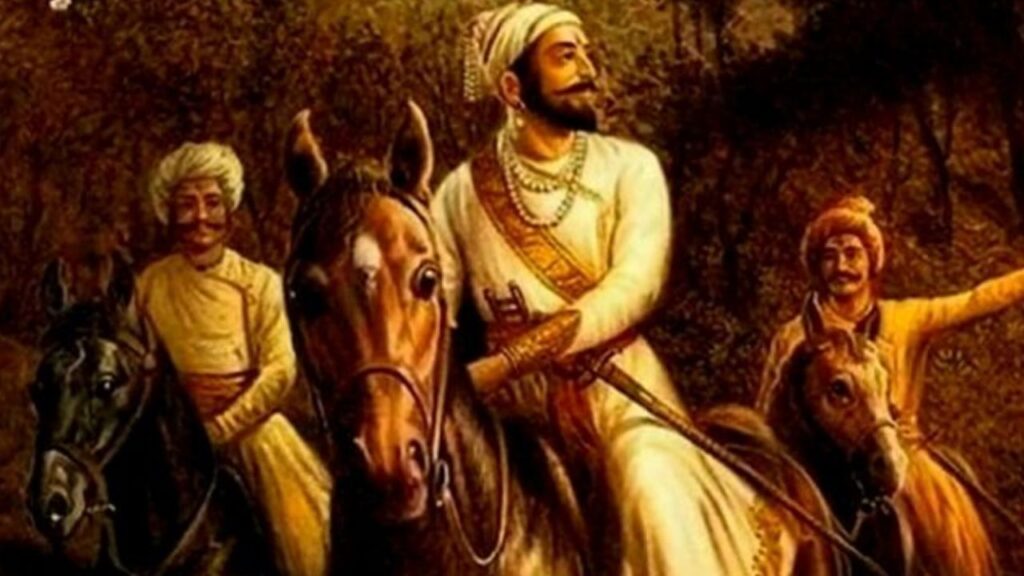Chhatrapati Shivaji Biography: Shivaji Maharaj is a brave and perfect person. Shivaji Maharaj was the fighter king, and he was known for being brave, smart, and good at running things.
Table of Contents
He always thought about his Swarajya and Maratha roots. He was a member of one of the 96 Maratha Clans and was a “Kshatriya,” which means brave warrior.
Chhatrapati Shivaji Biography
| Name | Chhatrapati Shivaji |
| Nickname | Lord of the Umbrella |
| Date of Birth | February 19, 1630 |
| Death | April 2, 1680 |
| Religion | Hindu |
| Birth Place | Shivneri Fort, Ahmadnagar Sultanate(currently Maharashtra, India) |
| Hometown | Shivneri Fort, Pune, India |
| Reign | 6 June 1674–3 April 1680 |
| Nationality | Indian |
| Dynasty | Bhonsle dynasty |
Chhatrapati Shivaji Wiki and Biography
There will be a new statue of Chhatrapati Shivaji Maharaj revealed at the Kranti Chowk in Aurangabad before his 392nd birthday.
Head of the government of Maharashtra, Uddhav Thackrey, will be at the launching of the statue of Chhatrapati Shivaji Maharaj on February 18 at midnight. His son, Aditya Thackeray, who is a cabinet minister in Maharashtra, and Subhash Desai, who is the guardian minister for Aurangabad, will also be there.
Deepak Thopate, a sculptor from Pune, made the figure, which will be put on a raised base.
Also Read: Acharya Prashant Biography: Birthday, Early Life, Education, Career, Awards
Chhatrapati Shivaji Early Life, Childhood, and Family
Shivaji was born on February 19, 1630, in Pune’s Shivneri Fort. His parents were Shahji Bhosle and Jija Bai.
He was raised in Poona by his mother and the Brahmin Dadaji Konda-dev, who taught him how to be a good soldier and a good leader. His government was largely based on how things were run in the Deccan.
Besides himself, he chose eight officials, who were called “Astapradhan,” to help him run the government.
At the start of the 17th century, the Bhonsle family from the Poona district got military and political help from the Ahmadnagar kingdom because they were close by. This led to the rise of the new Warrior class Marathas.
So, they took advantage of the situation and hired a lot of Maratha sardars and soldiers for their forces. He was born to Shahji Bhosle and Jija Bai. Shivaji grew up in Poona with his mother and the wise Brahmin Dadaji Konda-dev as guardians.
Dadaji Konda-dev taught Shivaji how to be a good soldier and a good leader. Besides that, Guru Ramdas taught him about religion, which made him proud of his home country.
Chhatrapati Shivaji Later Life
In 1645, Shivaji, a strong leader of the Bijapur Sultanate, took control of important places near Pune. Mohammed Adil Shah put him in jail in 1648 because he was a threat to him.
Shivaji kept taking over after Shahaji died in 1665. He bought the Javali valley from Chandrarao More. Shivaji’s work led to the Battle of Pratapgarh, where he beat the strong general Afzal Khan.
During the Battle of Kolhapur, Shivaji won, making the general run for his life. Siddi Jauhar, Adil Shah’s general, successfully besieged the fort of Panhala in 1660. It was taken back by Shivaji in 1673.
The battles and wins Shivaji had against the Bijapuri Sultanate caught the attention of Aurangzeb, the Mughal Khan.
In 1957, fighting started when Shivaji’s generals invaded and stole from Mughal lands. But Aurangzeb’s revenge was stopped by the rainy season and fights over who would be king next.
The Treaty of Purandar, which Shivaji signed with Aurangzeb in 1665, was a deal between the two.
Aurangzeb asked Shivaji to come to Agra to help strengthen the Mughal powers in Afghanistan, but Shivaji was smart and sneaky enough to avoid being caught and jailed.
Peace continued until 1670, when Shivaji launched a full-scale offensive against the Mughals and took back most of his lands.
Shivaji, the King of the Marathas, got along well with the English until they backed the Bijapuri Sultanate in 1660. Shivaji fought the English in Bombay in 1670 because they wouldn’t sell him weapons for war.
In 1971, Shivaji struck Danda-Rajpuri and stole from English factories in Rajapur, which kept the fighting going.
After taking over more land, Shivaji changed his name to King and set up the first Hindu Sovereignty in the South.
He consolidated control over territories adjoining Poona and Konkan and launched aggressive conquest efforts to consolidate most of the Deccan states under Hindu Sovereignty.
During his rule, the Maratha government was set up, with Chhatrapati as the chief ruler and eight ministers in charge of carrying out the rules.
These ministers included the Peshwa, Majumder, PanditRao, Dabir, Senapati, Nyayadhish, Mantri, and Sachiv.
Shivaji promoted the use of Marathi and Sanskrit in his court, encouraged tolerance for all religions, and introduced the Ryotwari system, Chauth and Sardeshmukhi taxes, and a strong military force. His kingdom was split into four areas, and a Mamlatdar was in charge of each one.
Also Read: Manoj Das Biography: Birthday, Wiki, Early Life, Education, Career, Awards, Personal Life
Chhatrapati Shivaji Death and Legacy
Shivaji passed away at the Raigad Fort on April 3, 1680, after a bout of dysentery. He was 52 years old.
There was a fight over who would take over after he died between his oldest son Sambhaji and his third wife Soyrabai, who was looking out for her 10-year-old son Rajaram.
On June 20, 1680, Sambhaji removed the young Rajaram from the throne and took it for himself.After Shivaji’s death, the Mughal and Maratha wars continued, and the Maratha empire lost a lot of its power.
But it was taken back by young Madhavrao Peshwa, who restored Maratha pride and made himself king of North India.



